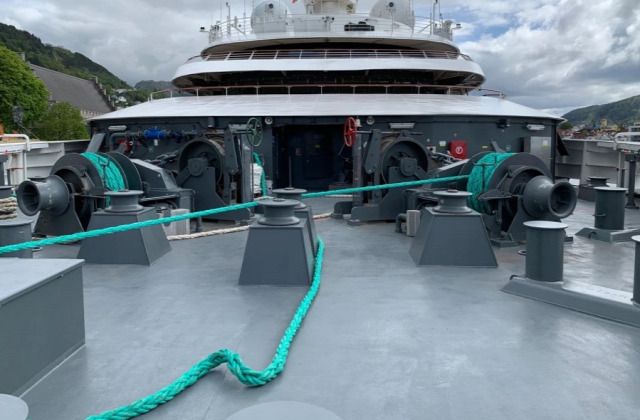Marine winches play a critical role in various maritime operations, from vessel mooring to cargo handling. To ensure their reliability and longevity, regular maintenance is essential. Proper maintenance practices not only extend the lifespan of marine winches but also enhance safety and operational efficiency. In this article, we will provide a comprehensive maintenance guide for marine winches, covering key areas such as cleaning, lubrication, inspection, and preventive maintenance.

Regular Cleaning
Regular cleaning is the first step in marine winch maintenance. Thoroughly clean the winch to remove dirt, salt, and debris that may accumulate over time. Use a soft brush or cloth to clean the exterior surfaces, including the drum, gearbox, and control panel. Pay special attention to areas prone to corrosion, such as exposed metal parts. Cleaning the winch helps prevent the build-up of contaminants and ensures proper functioning of the winch components.
Lubrication
Proper lubrication is crucial for the smooth operation of marine winches. Apply lubricants to critical components, such as gears, bearings, and moving parts, according to the manufacturer's recommendations. Use high-quality marine-grade lubricants that are suitable for the specific winch model and operating conditions. Regularly inspect the lubrication levels and top-up or replace the lubricants as necessary. Adequate lubrication minimizes friction, reduces wear and tear, and prolongs the life of winch components.
Inspection and Testing
Regular inspection is vital to identify potential issues and ensure the safe operation of marine winches. Inspect the winch cables or ropes for signs of wear, fraying, or corrosion. Check for loose or damaged electrical connections, and inspect the control panel for any malfunctioning switches or buttons. Test the winch operation, including hoisting, lowering, and braking, to verify that all functions are working correctly. Address any identified issues promptly to prevent further damage and maintain optimal winch performance.
Preventive Maintenance
Implementing a preventive maintenance schedule is crucial for marine winches. Create a maintenance checklist that includes specific tasks to be performed at regular intervals. This may include replacing worn-out cables or ropes, inspecting and tightening bolts and fasteners, checking the condition of electrical components, and conducting load testing to ensure the winch's lifting capacity. By adhering to a preventive maintenance plan, potential problems can be detected and addressed before they escalate into major failures.
Corrosion Protection
Corrosion is a significant concern in the marine environment. Apply protective coatings, such as marine-grade paint or corrosion inhibitors, to vulnerable areas of the winch exposed to saltwater or harsh weather conditions. Regularly inspect the winch for signs of corrosion and promptly address any areas of concern. Additionally, consider installing sacrificial anodes or cathodic protection systems to further mitigate the risk of corrosion and extend the winch's lifespan.
Operator Training and Awareness
Proper operator training and awareness are essential for the maintenance of marine winches. Ensure that operators are knowledgeable about the winch's operation, safety features, and maintenance requirements. Encourage operators to report any abnormalities or issues they observe during winch operation promptly. Regularly conduct training sessions and refresher courses to keep operators up-to-date with best practices and safety protocols.
Maintaining marine drum winches in optimal condition is crucial for safe and efficient maritime operations. By following a comprehensive maintenance guide that includes regular cleaning, lubrication, inspection, preventive maintenance, corrosion protection, and operator training, vessel owners and operators can ensure the longevity and reliability of their marine winches. Implementing a proactive maintenance approach reduces the risk of unexpected failures and enhances the overall safety and performance of the winch systems.

